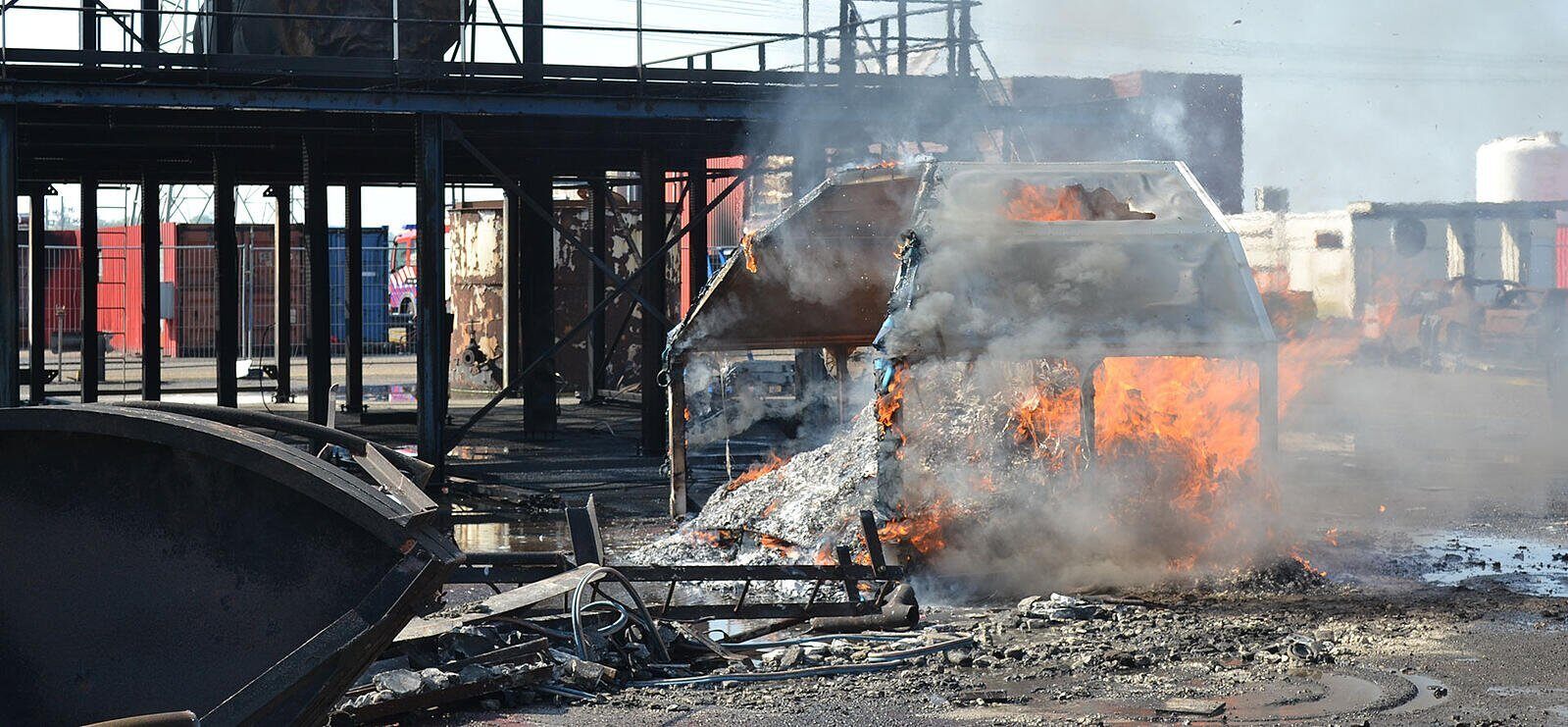When you take a trip by plane, you probably take at least one mobile device with you—a phone, a laptop, an e-reader, a digital camera or a tablet. Maybe even all five. And while you’d never dream of leaving home without them, you probably never give a second thought to the lithium-ion batteries they contain. Until they need recharging, that is.
But those incredibly handy batteries–so compact yet so powerful—are also inherently dangerous to aircrafts. If they’re damaged or if their battery terminals short-circuit, they can catch fire. That’s why you always have to declare them at the airline’s check-in desk.
Of course, it’s not just passengers transporting lithium-ion batteries on passenger planes. So do shippers of portable electronics. That’s because passenger planes carry (under pre-pandemic circumstances) around 50% of the world’s air cargo in their lower-decks.
And when you consider that, according to the IATA Dangerous Goods Board, lithium-based batteries are present in roughly 25% of cargo shipments on some air routes, you realise that passenger planes face a considerable fire-risk every single day.
In this article, we consider the problems associated with transporting lithium-based batteries by air and look at one particular innovative transport solution for shippers of portable electronics.
The hidden dangers of mobile devices
These days, most portable electronics rely on lithium-ion battery technology. Our demand for lighter, smaller and thinner mobile devices is undoubtedly the driver. Yet for all the considerable advantages of these rechargeable batteries, there is one considerable downside. They can self-ignite.
It’s no wonder, therefore, that airlines are required to take extreme safety measures to protect us all. Those measures, which are contained in IATA’s Dangerous Goods Regulations (DGR), vary slightly depending on whether the aircraft is a passenger plane or a cargo plane.
Passenger planes vs. cargo planes
Cargo planes may carry up to 35 kg of lithium-ion batteries per package. That limit is reduced to 5 or 10 kg if the batteries’ Watt-hour rating is below 100. If the batteries are not contained in or packed with equipment, their state of charge must not exceed 30% of the rated capacity.
Passenger planes, on the other hand, are strictly forbidden from carrying lithium-ion batteries packed by themselves. The only way to transport them is contained in or packed with equipment. However, at 5 kg per package, the weight limit is much lower than for cargo planes.
The impact of safety regulations on passengers, shippers and airline operators
The weight limit is rarely an issue for passengers. Ideally, mobile devices should be kept in carry-on baggage. However, if they go into checked baggage, they should be turned off and packed in such a way that they won’t get damaged or activated.
For shippers, who frequently transport quantities of lithium-based batteries thanks to the explosion in global e-commerce, weight limits and packing regulations are crucial. They must fully understand and always observe the many definitions, classifications, exceptions and prohibitions set out in the DGR. Packing batteries separately and in non-conductive material to prevent electrostatic discharge is a good example of what shippers can do.
Airline operators have perhaps the most difficult task as they have to adopt a wide range of safety strategies, yet many of the serious fire hazards they need to eliminate or mitigate are out of their hands. They include counterfeit or substandard lithium batteries, shippers that don’t follow packaging regulations, and undeclared lithium-based batteries.
Overcoming the limitations of a plane’s fire-suppression system
Perhaps one of the most serious hazards facing airline operators is the fire-suppression system in aircraft cargo compartments. Unfortunately, these have not been designed to tackle fires caused by lithium-based batteries. They may extinguish the flames, but they don’t stop the battery heating up.
And it’s that heat which is the real problem. It can exceed 1,000°C and easily spread to other devices in the cargo hold. Re-ignition follows, which may result in an explosion.
One effective preventative measure that operators can adopt pretty easily is loading at-risk cargo in fire-resistant containers (FRCs). These Unit Load Devices are designed with lithium fires in mind, so they’re perfect for transporting portable electronics by air.
An innovative fire-resistant container for lithium-based batteries
At VRR, we’ve created a unique FRC that cuts off a fire’s flow of oxygen yet allows smoke to escape. The smoke alarm in the cargo hold is triggered, the heat from the fire is suppressed, and the pilot can take evasive action.
The FRC’s quality design is the result of years of research. One of the main differences between this and an ordinary container is the fabric used for the cover. Air cargo containers typically use flammable PVC. However, we replaced that with fireproof fabric.
The results of the fabric amazed even us. Our FRC can contain a Class A fire for at least six hours. This gives the pilot enough time to make an emergency landing, no matter how far away the plane is from an airport when fire breaks out.
And it gives shippers a safe way to transport portable electronics by air.
Do you ship lithium-based batteries? Learn more about our innovative fire-resistant containers and how they make it much safer to transport electronics.

.png)

